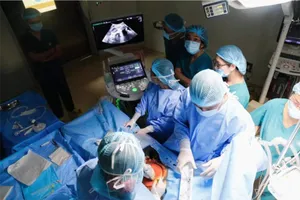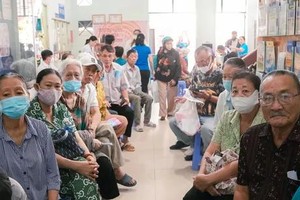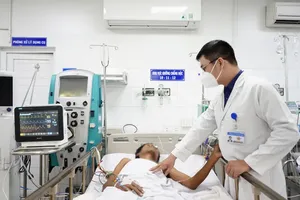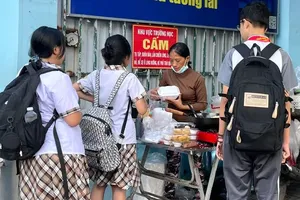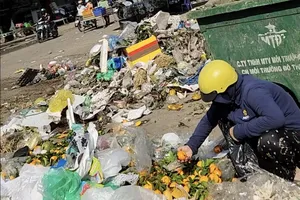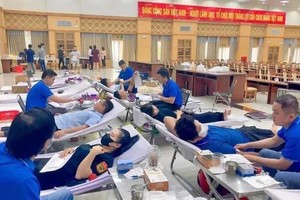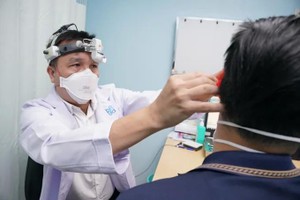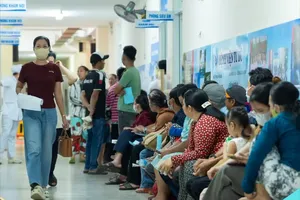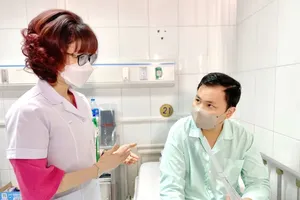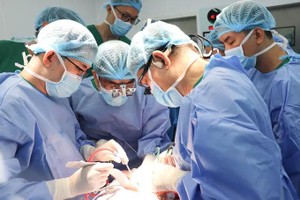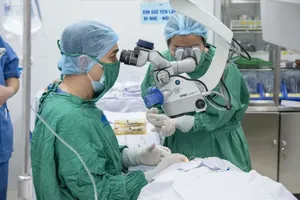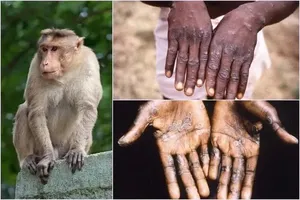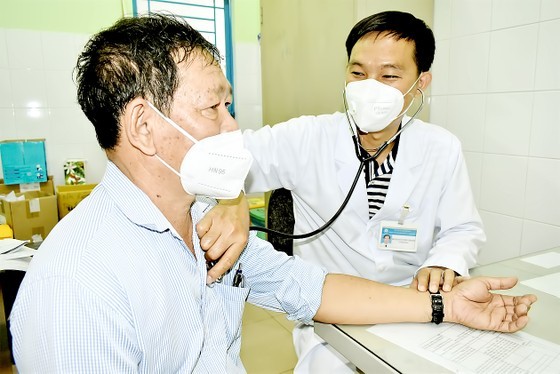 A doctor examines a former Covid-19 patient
A doctor examines a former Covid-19 patient
Doctor Nguyen Thanh Sang, Director of the Post-Covid-19 Physiotherapy Rehabilitation Center in Le Van Thinh Hospital in Thu Duc City, said that many people, especially those who have been infected with Covid-19 with diabetes are worried when learning that some hospitals in Ho Chi Minh City have recorded dozens of cases of osteonecrosis of the upper jaw with complicated pathology whereas there is no treatment regimen.
According to Dr. CCII Nguyen Thanh Sang, from the beginning of July until now, the center receives nearly 50 patients every day, and about 2 percent of patients have symptoms such as swollen cheeks, and painful teeth. They were later guided to go to the ear-nose-throat department for a CT scan.
A 29-year-old girl in An Phu Ward in Thu Duc City said that in the past two months, after contracting Covid-19, she was always tired, and recently appeared some sores on the gums and palate. While waiting for her turn to be examined at Le Van Thinh Hospital, the girl revealed that she was nervous because newspapers and media have recently published the news that many people had osteonecrosis of the upper jaw after being infected with Covid-19 while she suffered similar symptoms of this disease.
The screening area for patients with post-Covid-19 symptoms of the General Hospitals in Hoc Mon outlying district, District 12 Hospital, the Ho Chi Minh City University of Medicine and Pharmacy Hospital, the HCMC Hospital of Orthopedics and Rehabilitation, the HCMC Hospital for Tropical Diseases, and the 115 People's Hospital said that last week, the number of people coming for post-Covid-19 medical examination and treatment increased by 20 percent-50 percent compared to before. Many patients expressed concern and fear that they had osteonecrosis.
Colonel, Dr. Vu Dinh An, Deputy Head of the Intensive Care Unit, former Deputy Director of the Covid-19 Treatment Center of the Military Hospital 175 under the Ministry of National Defense, said that out of nearly 6,000 severe Covid-19 patients were treated by the center, so far there have been no cases of osteonecrosis but they mainly suffering from prolonged fatigue and concentration disorders, shortness of breath, cough, insomnia, depression, chest pain, muscle pain.
The recent spike in the number of patients with osteonecrosis in the city is really worrying. Accordingly, the Department of Health of Ho Chi Minh City has recognized this disease as a new problem and will convene a meeting with experts in the field to find out the cause in the near future.
In addition, the Ministry of Health needs to jump into an examination of the disease soon. In the immediate future, the Ministry requested relevant hospitals to promptly report the situation of patients who come for examination, treatment, and treatment results.
Furthermore, a professional council will be set up to study and determine the cause of the disease and factors related to the pathology of the new disease. At the same time, directing and providing accurate information based on science and proposing measures to spread widely to help people not to worry so much.
According to Dr. Vu Dinh An, it is not convincing based on clinical results that the new disease has factors related to Covid-19.
With the same opinion, Associate Professor Phung Nguyen The Nguyen, Head of the Department of Pediatrics in the University of Medicine and Pharmacy, Ho Chi Minh City University of Medicine and Pharmacy, Head of the Covid-19 Treatment Department, the Children's Hospital 1, also said that the world has recognized the new 80 cases of osteonecrosis and there has not been a complete study, specific and exact evidence to confirm that this disease is related to Covid-19. These are all preliminary hypotheses based on clinical evidence.
Specifically, four suspected risk factors lead to cooperative cooperation in patients with Covid-19. The first hypothesis, possibly due to the SARS-CoV-2 virus attaching to the ACE-2 receptor, is concentrated in the mucous membranes of the nose and mouth and microvascular occlusion of the maxillary bone.
People with Covid-19 experience blood clotting, causing blood vessel blockages that do not nourish bones well. Second, due to the use of anti-inflammatory drugs (corticoids). Third, due to bacterial infection, and fungal infection. Finally, patients with diabetes cause vascular complications and reduce resistance, so the body is susceptible to superinfection.
According to Dr. Phung Nguyen The Nguyen, people after Covid-19 should pay attention to the phenomenon of osteonecrosis when seeing signs of persistent pain in the large bones, suddenly unable to sit cross-legged, change gait, and lame. In particular, people with severe Covid-19 and using corticosteroids for a long time should see a doctor immediately.
Last but not least, in order to avoid worrying about osteonecrosis, elderly people need to control their underlying diseases well including taking diabetes drugs, anticoagulants, cancer adequately, proper oral hygiene as well as not taking unnecessary drugs for a long time, and finally treat bacterial infections in the oral cavity well.
